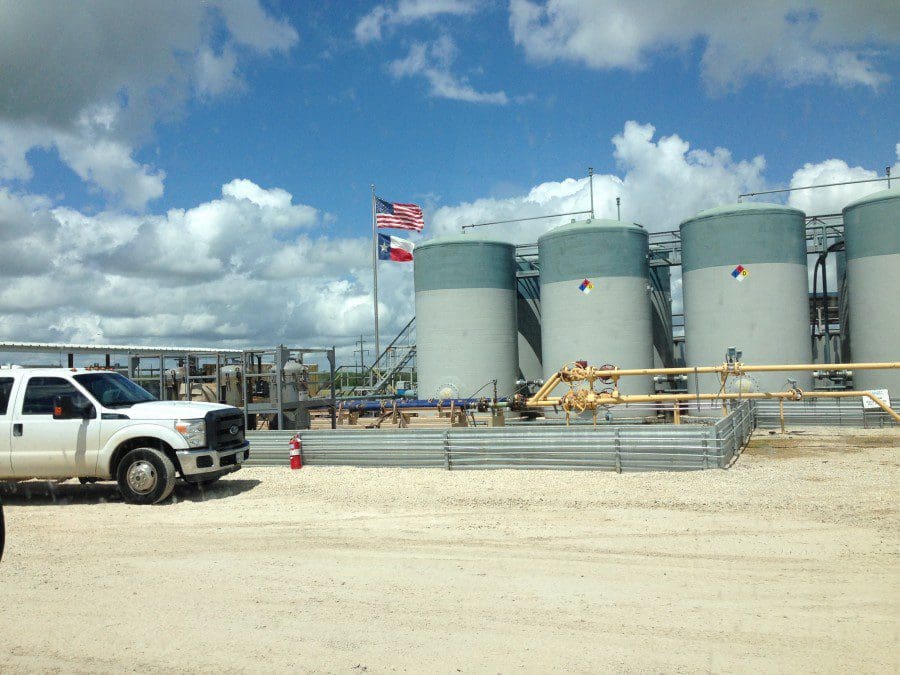The saltwater disposal (SWD) industry has changed significantly over the last five years thanks to advances in completion technologies such as fracking. SWDs have popped up on every corner, some are next door or right across the street from each other, all competing for their share of the increasing waste water market. Just a few years ago, disposal operators were living “high-on-the-hog” with impressive volumes of flowback water being transported to their facilities for disposal. This water contained large percentages of oil which could be collected and sold, further driving site profitability.
Today, rigs are stacked up and drilling has slowed considerably, thereby reducing the amount of oil-rich flowback water available. E&P companies are feeling the pain of current commodity prices, creating an environment where operators are cutting costs significantly. This situation places added pricing pressure on disposal companies, and in some markets, disposal costs are down to $0.20 per barrel, creating difficulties for achieving profitability.
During these challenging times, difficulty arises when seller expectations are not in line with buyers’ appetites and current market conditions. Sellers want to receive the maximum value from their asset sale and price their assets as if we were still seeing $100 per barrel of oil. Traditionally, buyers are willing to pay three to four times EBITDA or perhaps more depending on the condition of the facility and injection formation, location, area production levels, drilling and completion activity, financial strength, pipelines or piped water potential, customer base and type of contracts in place.
Nowadays, sellers need to think “outside the box” and explore ideas that can be cost-effective revenue generators while simultaneously adding value to your facility and customer base. When thinking in terms of salability, many of these options will not only make your asset(s) more attractive but also more valuable to potential buyers.
You can explore the following options:
- For starters, customer surveys are always a good way to identify areas of improvement. Disposal operators should want to know where they are falling short or how they can make improvements for their valued customers. Whether it involves increasing the number of offloading lanes to reduce wait times, covering the offloading bay to prevent sun/rain exposure or perhaps adding cooling fans may also be cost effective ways to make your customers a little more comfortable during offloading and put your facility a step above your competitors. Taking care of customers is critical and the only way to accomplish that goal is by listening to their needs.
- Transportation is the lifeblood of a disposal. Truck drivers like to eat and there are many disposal operators who do not provide drivers with free snacks and drinks. This practice is one which should be considered at every manned facility. Un-manned facilities might want to incorporate a vending machine at minimum. Some operators refuse to spend money taking care of their customers all in the name of driving profits, but in reality, that approach only hurts operators bottom-lines. We are not suggesting you serve surf and turf, but consider burritos and sandwiches, which cost as little as $1 to $2 per serving. Of course you will need to make sure each driver is limited to one or two per day because you sure can’t afford to feed an entire family every day of the week. Try Sysco Foods or another distributor for some inexpensive “grab and go” items for a few months and measure the results.
- Raffles and giveaways go a long way and provide an exciting way to increase truck traffic. There are many facilities that raffle off 50-inch flat screens and gift cards. Each driver is issued a ticket for every load they deliver. The higher the number of loads, the greater their chances are for winning. Try raffling off a brand new Ford F250 and see how many trucks line up. Joking aside, try not only offering a grand prize, such as a TV, but also award prizes for second and third place. The more drivers who win, the happier your customers will be. A $50 gift card will go a long way and won’t make a dent on your bottom line.
- Many SWD facilities turn away loads with high levels of frac gels. Instead of losing revenue, consider purchasing gel-breaking enzymes and treat in traditional mud tanks with agitators prior to sending the fluids into a gun barrel for processing. There are many chemical companies that provide such breakers and have proven performance in not only breaking down gels but also preventing future downhole problems from re-crosslinking. The chemical cost to treat 130 barrel tank can range from $25 to $150 and operators can charge as much as $4 per barrel to dispose of water with high gel concentrations, ultimately creating a profit of up to $350 per truck. Factoring 10 loads per week, a disposal site could potentially generate an additional $170,000 per year in revenue.
- Another way disposal operators can increase revenue and the value of their facility is by accepting spent drilling fluids. In many plays, mud disposal is limited to a handful of locations. Landfills have traditionally been the primary place for disposal, but nowadays, more and more mud reclamation plants and stationary treatment facilities are coming online in order to handle the large volumes of solids arising from continued development activity. Separating solids from drilling fluids doesn’t take a rocket scientist, but it does require some level of expert assistance. There may be additional permitting requirements depending on state regulations in addition to the physical plant modifications. Operators may only need to incorporate a single stage, such as a shaker and screens, without having to include a second-stage centrifuge or cyclone type de-sander. Third-stage thermal driers or other big ticket items can drive costs way up and may not be necessary. Slurry injection has been a common method of disposal for decades, but operators should not only understand their local market but also consult a geologist to make sure the injection formation is a suitable candidate prior to making any decisions. Make sure you have a cost- effective plan for handling the solids. Some companies may opt to treat with chemicals or blend with other materials for use as a base material for roads or pad preparation. Others may elect to simply haul to the nearest landfill or landfarm for disposal.
- Trucking companies haul a variety of waste materials for disposal, including drilling fluids, produced/flowback/fresh water, wash water, tank/pit bottoms and more. The cleaning of vacuum truck tanks and frac tanks is a continual process in the oil patch. By incorporating a washout bay or multi- bay facility, disposal operators can capture additional revenue, in most cases, very cost effectively. There are many low- and high-tech options to consider when evaluating the potential implementation of a washout.
- In order to truly separate your facility from competitors, it may be necessary to think way outside the box. One idea that has yet to be implemented is adding a lane strictly for fuel. Most trucking companies either refill their trucks at local fueling stations or back at their yard. Often, drivers have to drive an extra 30 miles or more just to fuel up during their shift. Time is money in the business of hauling and providing drivers with the ability to receive discounts on fuel based on disposal volumes could be just the solution needed to save your customers both time and money, and prevent them from driving right down the road to the next disposal.
Nowadays, more and more E&P companies conduct site inspections for liability purposes and not every disposal facility ends up on their “Approved” list, which means drivers have restrictions placed on which disposals they are allowed to haul to. Most facilities are excluded due to poor operations or sub- par facilities, which include oil on the ground, high injection pressure, containment issues and limited capacity. These types of issues are vital to a disposals success and should be addressed promptly. Measures should be taken to further prevent such occurrences if possible.
The ideas above are merely suggestions. The goal is to identify a few ideas disposal operators can explore which might increase asset value and potential salability during these challenging times. Disposal operators need to pay attention to the costs associated with each improvement and make sure the potential returns are worthwhile.
Kurt Knewitz is the President of BuySWD.com. For more information visit www.BuySWD.comor via email to Kurt@BuySWD.com.






